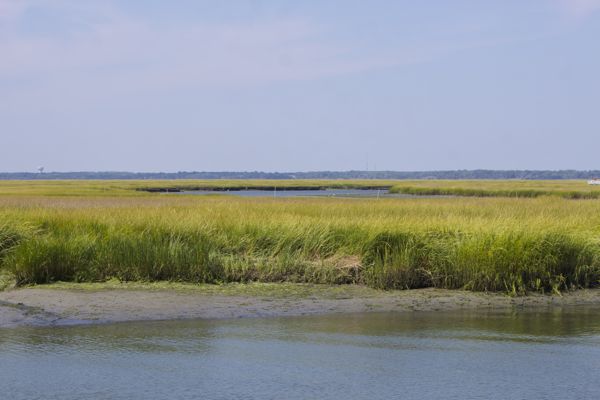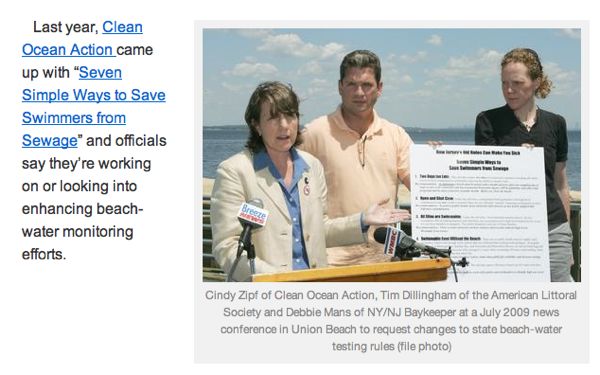Why Were We Blindsided By The Exxon NRD Deal?
NJ’s Most Significant Environmental Dispute Remained Below The Public’s Radar for Years
Sunshine and Public Pressure Could Have Blocked Christie’s Dirty Deal
The DEP filed “Natural Resource Damage” (NRD) lawsuits in 4,000 cases, including Exxon, back in 2004 – at the time DEP filed them, the DEP issued a press release publicly announcing the lawsuits.
Similarly, in 2007, to avoid the tolling of a legislatively imposed statute of limitations, the DEP issued another press release on filing 120 NRD lawsuits, which included the prior filings on Exxon Bayway (2004) and Exxon Bayonne (2004).
Then, things seemed to fall into a legal black hole, below the public radar.
In 2006, a DEP Consultant developed and submitted to the Court an extremely ambitious and precedent setting $8.9 BILLION restoration plan, certainly one of the largest NRD restoration plans in the Country, by both acreage and cost.
For context, the notorious Exxon Valdex 1989 oil spill in Alaska, which contaminated over 1,500 miles of shoreline, was only a $1 billion NRD settlement.
According to the DEP consultant Report:
Exxon previously funded actions to restore coastal wetlands of the Arthur Kill estuary to compensate the public for losses related to petroleum contamination. In January 1990, a Bayway pipeline running beneath the Arthur Kill ruptured, spilling 567,000 gallons of No. 2 fuel oil. Over 100 acres of salt marsh were oiled, killing the marsh vegetation, fish, crabs, clams, and other invertebrates dependent on the wetland habitat. An estimated 700 birds died as a result of the spill. As a result of natural resource damage claims brought by federal and state natural resource trustees, Exxon agreed to pay $11.5 million in settlement to restore injured natural resources (NOAA et al., 2006).
The Report presents the costs of other natural resource restoration projects in the region – in terms of cost and size (acreage):
The DEP’s Exxon plan dwarfed these prior projects in both acreage and cost.
Additionally, the DEP Consultant’s Report cites their plan as based upon and advancing the restoration work of NJ based groups, American Littoral Society (ALS) Atlantic Coast Restoration Inventory, April 14, 2006 and NY/NJ Baykeeper:
Programs and conservation agencies and organizations such as the NJDEP Green Acres Program, NJ Meadowlands Commission, NJ Meadowlands Conservation Trust, NJDEP’s Landscape Project, the New Jersey Natural Lands Trust, the New Jersey Conservation Foundation (NJCF), the NY/NJ Harbor Estuary Program (HEP), the NY/NJ BayKeeper, the Natural Resource Conservation Service (NRCS), USFWS, and NOAA are actively working to protect, preserve, and restore the ecological integrity and productivity of natural resources in the area, and to provide public access to such green spaces. These thriving preservation and restoration programs evidence local and regional support for restoration and preservation of natural areas.
So, one might presume that those groups were involved with or at least aware of the DEP’s Restoration plan, particularly ALS whose work was used to to evaluate the feasibility of the off site restoration plan.
Why was there no huge media and environmental group focus on an issue of this magnitude?
Recent new reports reveal that the Exxon case went to trial in November, with prominent NJ conservation leaders involved and providing testimony as witnesses.
Yet I don’t recall ever hearing one word about this huge DEP $8.9 billion regional restoration plan or the legal dispute in the courts.
Why was the public and the press blindsided by the Exxon deal?
Wouldn’t public awareness, environmental group advocacy, and media investigation and scrutiny have influenced or prevented the Christie administration from cutting such a horrible deal?
Why was there virtually no awareness of one of the largest natural resource damage and restoration plans in the country?
Were NJ’s coastal advocacy groups aware of and working on the restoration plan?
Maybe we were blind sided because the coastal advocacy groups have gotten too close to DEP and are funded by DEP?
Maybe because coastal advocacy groups were keeping quiet in anticipation of receiving some of the huge $8.9 billion windfall to fund their own organizations in support of the DEP’s Restoration plan?
Maybe because coastal advocacy abandoned government accountability, complex regulatory work, and public advocacy for a model based on local, voluntary, “good news”, feel good window dressing crap like this?
My apologies to all involved if it was just me that was asleep at the switch.



